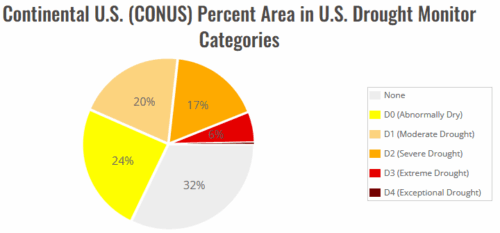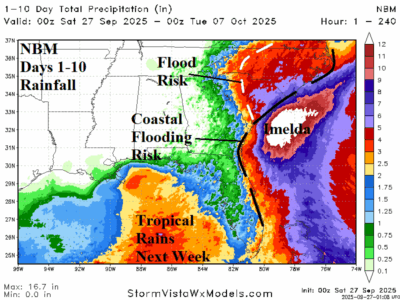09/28/2025, 12:21 pm EDT
The late summer season drought in the Midwest States is strengthening. Dry-to-drought conditions have also developed and are intensifying in the Gulf Coast and Northeast regions. The late summer new drought generation has caused a shift in U.S. regions observing drought from 45% in mid-August to nearly 70% during late September.




